Key takeaways:
- Mining pools enhance earning predictability and reduce the frustration of solo mining through collaborative efforts.
- Key features like payout structures (PPS vs. PPLNS), fee structures, and community support significantly affect the mining experience and potential earnings.
- Evaluating a mining pool’s reputation, including user reviews, transparency, and security measures, is essential for a secure and reliable mining experience.
- Choosing the right mining pool involves assessing location, community culture, and alignment with personal strategies and goals for optimal outcomes.
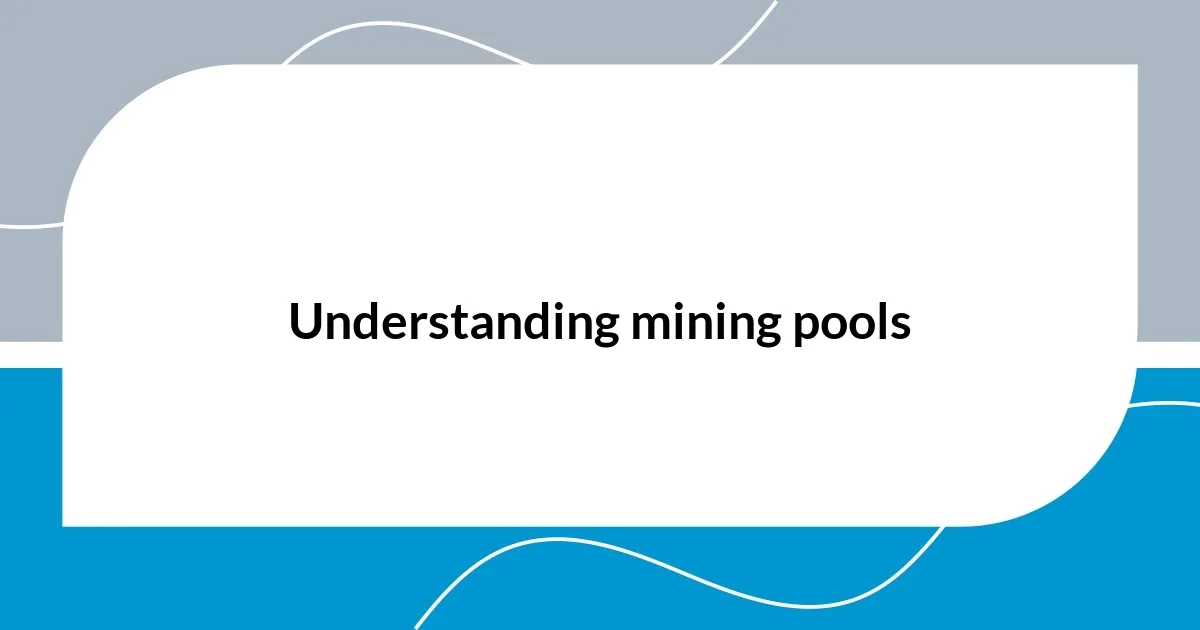
Understanding mining pools
Mining pools are essentially collaborative groups where individual miners come together to combine their computational power. I remember the first time I joined a mining pool; the excitement of contributing to something larger than myself truly changed the game for me. It felt empowering to know that my efforts would contribute to mining blocks and sharing the rewards.
When you mine in a pool, the process becomes more predictable. Instead of relying solely on luck, which can be quite harsh in solo mining, pools allow participants to earn smaller, more frequent payouts. Have you ever felt the frustration of going days without finding a block? Pool mining can alleviate that anxiety, providing a sense of stability through collective effort.
Different mining pools have varying payout structures, fees, and policies, which can greatly impact your earnings. I’ve had moments where I didn’t pay attention to these details and regretted it later when my returns didn’t match my expectations. It’s crucial to invest some time in understanding these factors before diving in; mining pools may seem straightforward, but the right choice can lead to significantly better outcomes.
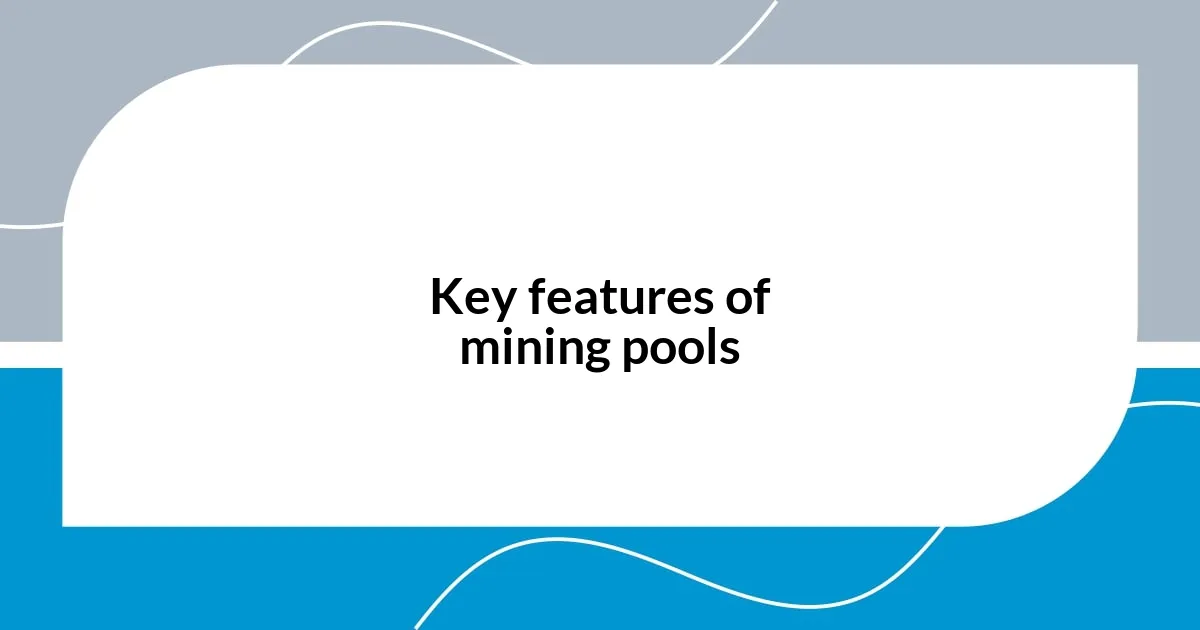
Key features of mining pools
Mining pools offer several key features that can greatly impact a miner’s experience and potential earnings. One of the most significant aspects is the payout scheme. Pools can operate on different models, such as Pay Per Share (PPS) or Pay Per Last N Shares (PPLNS). I remember being confused by these terms initially, but learning how they work helped me choose a pool that offered stability in my earnings. It’s vital for miners to understand these structures so they can align their cash flow expectations accordingly.
Another critical feature is the pool’s fee structure. Each mining pool typically charges a percentage of your earnings as a fee for their services. In my early days, I joined a pool with relatively low fees, only to discover later that the trade-off was in the server reliability and support. That taught me to look beyond just the fee and consider the overall value a pool provides, including customer service and uptime.
Lastly, the mining pool’s community and support features can make a significant difference. A vibrant community often means more shared knowledge and better troubleshooting. During my first few weeks, I was fortunate to find a pool with an active forum, which helped me quickly resolve issues and meet fellow miners. When choosing a mining pool, I always look for one that fosters a robust community and offers resources for its members.
| Feature | Description |
|---|---|
| Payout Structure | Differing models like PPS or PPLNS impact earnings predictability. |
| Fee Structures | Fees taken from earnings can vary, affecting overall profitability. |
| Community Support | An engaged community can enhance the mining experience through shared insights. |
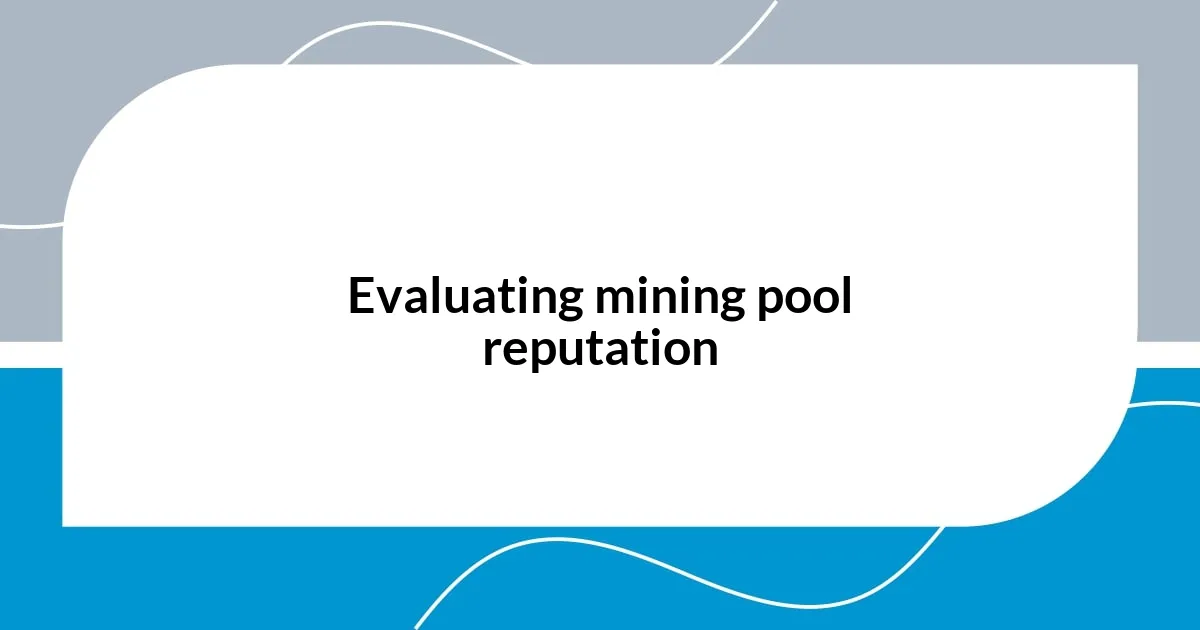
Evaluating mining pool reputation
It’s essential to consider the reputation of a mining pool before joining. I’ve seen firsthand how a pool’s track record can impact a miner’s experience. For instance, when I was exploring options, I found myself drawn to pools with a history of transparency and reliability. A strong reputation often correlates with consistent payouts and reliable service.
Here are some factors to guide you in evaluating a pool’s reputation:
- User Reviews: Personally, forums were a goldmine for insights. I often found users sharing their experiences, which informed my decisions.
- Length of Operation: Pools that have been around for years usually have established practices and can be more trusted.
- Transparency: A pool that openly shares its statistics, fees, and any changes creates a sense of security.
- Customer Support: I once contacted a pool’s support with a minor question and was pleasantly surprised by the prompt response, which gave me confidence in their services.
- Security Measures: I always feel safer with pools that prioritize security features, such as two-factor authentication.
By digging into these aspects, you can better assess whether a mining pool aligns with your goals and values.
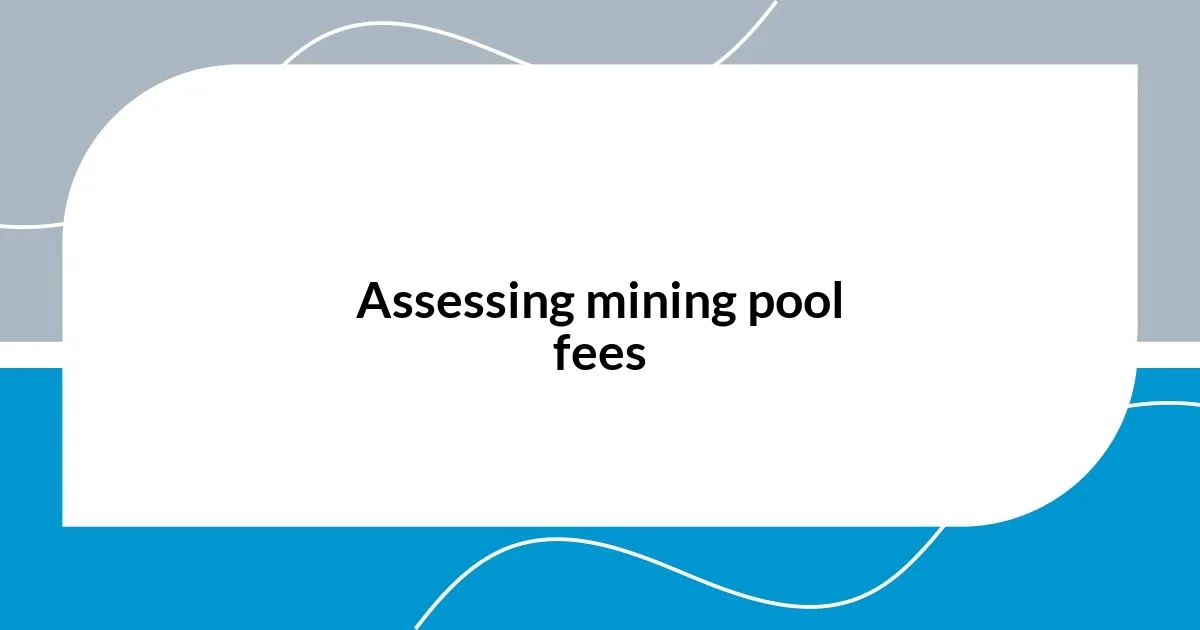
Assessing mining pool fees
When it comes to mining pool fees, understanding what you’re actually paying for is crucial. I remember my initial excitement about choosing a mining pool with a 1% fee, but as time went on, I realized that lower fees can sometimes come with hidden costs, like lower payout frequencies or poorer service. This made me wonder—are you really saving money if the pool doesn’t provide timely support during crucial moments?
Different pools adopt various fee structures, and it’s essential to assess how these fees align with your earning strategy. For example, some pools might promise lower upfront fees but include extra costs hidden in their payout methods. I’ve been in situations where I miscalculated my potential earnings because I hadn’t considered the overall fee impact on my payouts. Reflecting on that made me advocate for calculating expected fees alongside your potential income—it’s a game changer.
Furthermore, keep in mind that the fee could be a reflection of the pool’s overall quality. In one instance, I opted for a pool with slightly higher fees because their track record boasted exceptional uptime and responsive support. That decision ended up being worth it; the steady income and peace of mind I gained were invaluable. So, when assessing mining pool fees, think critically about what’s included—because sometimes, you get what you pay for.
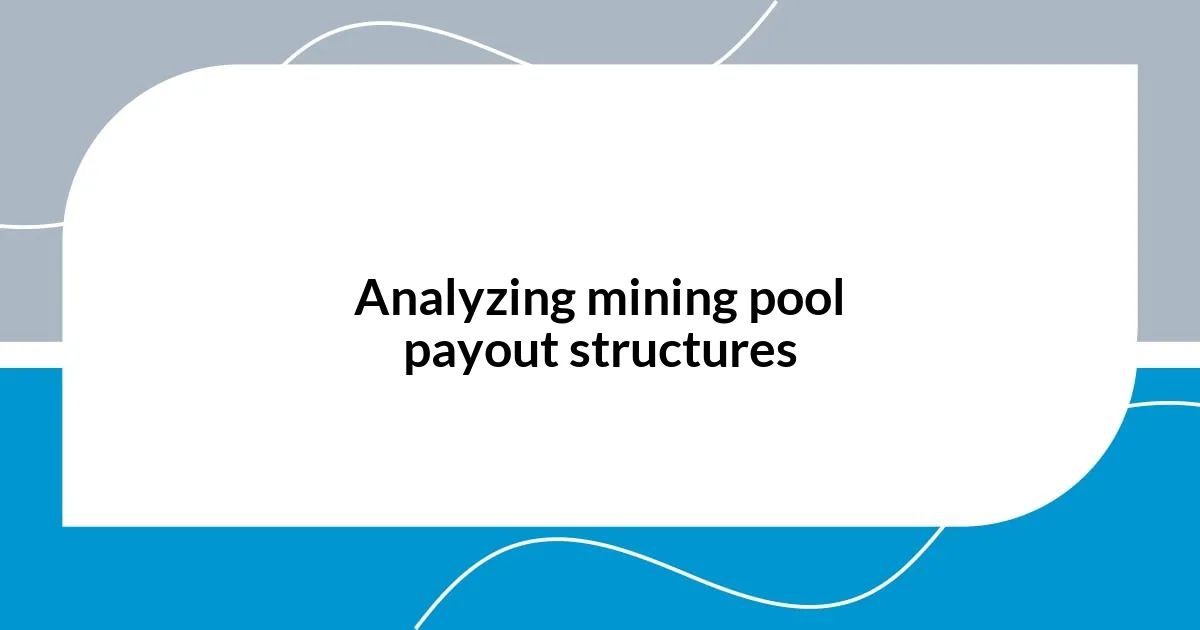
Analyzing mining pool payout structures
Analyzing mining pool payout structures is vital for maximizing your earnings. I recall a time when I joined a pool that offered a PPLNS (Pay Per Last N Shares) payout structure. Initially intrigued by the promise of higher payouts, I soon learned that this model can lead to inconsistent earnings—especially during off-peak hours. I couldn’t shake the frustration of seeing others in the pool earn more despite contributing less. Isn’t it puzzling how payout methods can influence our perception of fairness in the mining community?
When considering different payout structures, it’s essential to weigh the benefits of each against your mining habits. For instance, while PPS (Pay Per Share) provides a steady income, it often comes with a premium fee. I experienced this firsthand; I opted for a PPS structure because I preferred predictable earnings. The slight fee increase was worth it to me for the peace of mind of knowing I’d get paid consistently, even when the network was slow. Have you ever found yourself in a similar situation, choosing stability over potential but risky higher rewards?
Beyond just the type of payout structure, the frequency of payments can make a significant difference in your overall earnings. I remember being part of a pool that only paid out once a month. Initially, I thought it would work for me, but that long wait felt painful, especially during market volatility. I quickly realized that more regular payouts could help me reinvest quicker. This experience taught me that not only the payout structure but also how often you receive payments can impact your mining strategy in the long run.
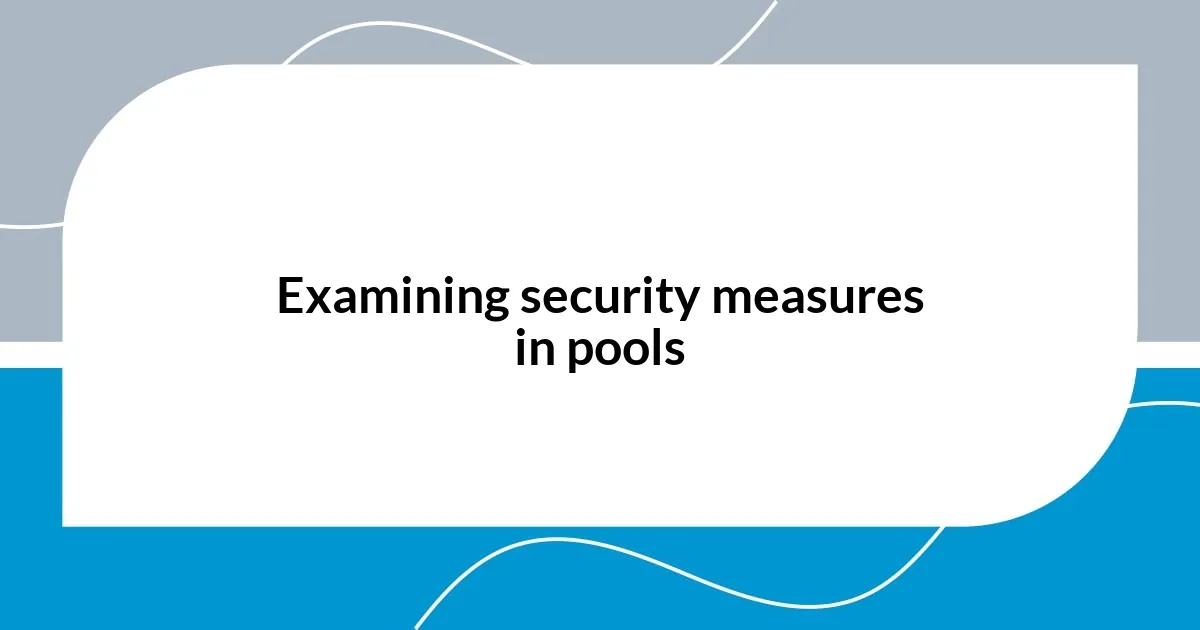
Examining security measures in pools
When delving into security measures within mining pools, I’ve always emphasized the importance of two-factor authentication (2FA). The first time I enabled 2FA on my mining pool account, I felt an immediate sense of security. It’s astonishing how a simple app can add a layer of protection that makes it considerably harder for unauthorized users to gain access. Have you ever struggled with the balance between convenience and security?
Another crucial aspect is the pool’s transparency regarding their security protocols. I once joined a pool that published regular updates about their security practices, which fostered trust. Learning they used cold storage for a portion of their funds reassured me, especially after hearing about hacks in other pools. It made me wonder—how much do you know about the security measures in your chosen pool? If they’re not upfront, it’s worth considering what vulnerabilities might be lurking beneath the surface.
Finally, I’ve learned that community feedback can serve as a valuable indicator of a pool’s security reliability. While researching pools, I remember coming across a forum discussion about a particular pool experiencing repeated DDoS attacks. The collective concern among miners opened my eyes to the significance of choosing a pool with a resilient infrastructure. Do you pay attention to community input while making your decisions? Engaging with others can offer insights that you might not discover otherwise.
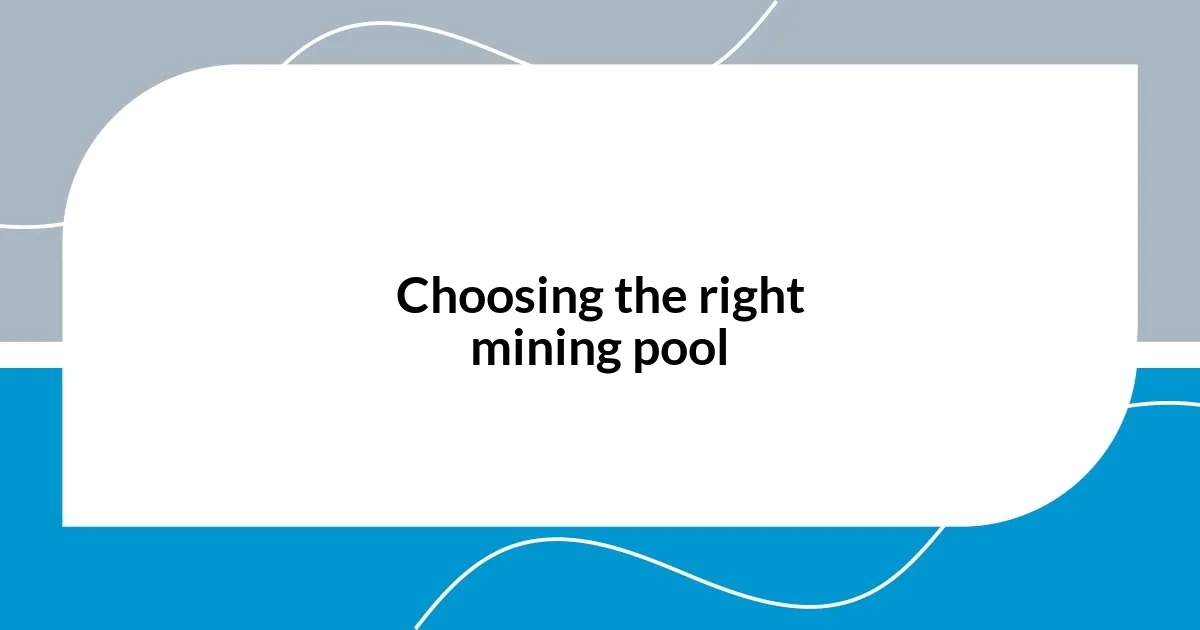
Choosing the right mining pool
Choosing the right mining pool is about understanding not just the technical aspects, but also how they align with your personal strategy and goals. I remember the sense of excitement I felt when joining my first mining pool. I simply picked one that was touted as the biggest in terms of size, but I soon realized that size didn’t guarantee success. Have you ever jumped into something because it seemed popular, only to find it didn’t fit your needs?
One factor I’ve come to appreciate is the pool’s location. I once joined a pool that was based overseas, thinking it wouldn’t matter. However, the latency impacts made my mining less efficient. It hit home when I conducted a simple test comparing my earnings against a locally-hosted pool. The difference was remarkable! It made me realize that proximity matters, especially in a world where every second counts in mining.
Moreover, don’t underestimate the importance of community culture within the pool. When I switched to a smaller, more community-focused pool, the collaborative atmosphere was refreshing. I was able to share strategies and learn from more experienced miners. It felt like being part of a family that genuinely cared about each other’s success. What about you? Have you considered how the community aspect plays a role in your mining experience? Finding the right fit can make all the difference.